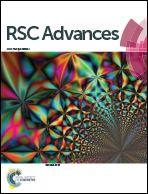Inkjet printing of energetic composites with high density
Abstract
To explore a new manufacturing method in preparing energetic composites, an inkjet printing device possessing the ability of high precision and flexibility was utilized to deposit six 3,4-dinitrofurazanofuroxan (DNTF) and hexogen (RDX) based explosive inks. The printed quality, inner structure, printed density and crystal morphology of energetic composites were tested, as well as their thermal decomposition properties and detonation properties. The results indicate that inkjet printing provides a good formation uniformity for explosive inks. Interestingly, all energetic composites exhibit excellent printed density with all values higher than 90% theoretical maximum density (TMD). Meanwhile, the composite DNTF/RDX/EC/GAP (54/36/5/5) performs best, reaching 96.88% TMD, which has reached a new height in the three-dimensional printing of energetic composites. Further study manifests that there is no appearance of new material, and the stacking manner of rodlike structures in multilayer manufacturing is the key to achieving such an amazing result. The particles in the energetic composites are spherical with the size ranging from 500 nm to 2 μm and connect with each other closely in the matrix of binders. Moreover, the energetic composites that were directly deposited into wedge channels display a good capability in steadily detonating above the size of 1 × 0.32 mm.



 Please wait while we load your content...
Please wait while we load your content...